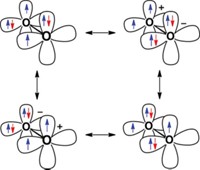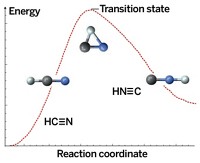Advertisement
Grab your lab coat. Let's get started
Welcome!
Welcome!
Create an account below to get 6 C&EN articles per month, receive newsletters and more - all free.
It seems this is your first time logging in online. Please enter the following information to continue.
As an ACS member you automatically get access to this site. All we need is few more details to create your reading experience.
Not you? Sign in with a different account.
Not you? Sign in with a different account.
ERROR 1
ERROR 1
ERROR 2
ERROR 2
ERROR 2
ERROR 2
ERROR 2
Password and Confirm password must match.
If you have an ACS member number, please enter it here so we can link this account to your membership. (optional)
ERROR 2
ACS values your privacy. By submitting your information, you are gaining access to C&EN and subscribing to our weekly newsletter. We use the information you provide to make your reading experience better, and we will never sell your data to third party members.
Separations
Model could improve promising C-H activation
Theory reveals hidden energy costs and points to new chemistry
by Sam Lemonick
November 14, 2018
| A version of this story appeared in
Volume 96, Issue 46

Carbon and hydrogen make stable bonds that are ubiquitous in organic molecules. That’s why chemists spend so much energy looking for ways to break them and replace hydrogens with more useful moieties. One group recently found a new way to make a carbon atom release a hydrogen and accept new substituents. But they didn’t understand why the intramolecular reshuffling worked as well as it did with relatively weak oxidants (Sci. Adv. 2018, DOI: 10.1126/sciadv.aat5776). Now their colleagues have made an accurate theoretical model that can explain the reaction’s dynamics (J. Am. Chem. Soc. 2018, DOI: 10.1021/jacs.8b10461). It points to ways to improve this method and hints at possible electrochemistry applications.
In July, James M. Mayer’s group at Yale University described a method for C-H functionalization under mild conditions by proton-coupled electron transfer (PCET) reaction.
Hammes-Schiffer’s theory explains that the reaction happens by simultaneous tunneling of the proton and electron between energy states. “All the transitions are downhill,” Hammes-Schiffer says, meaning they release energy. She thinks this is why the strength of the oxidant has relatively little effect on how quickly the reaction proceeds. Robert Knowles, a synthetic organic chemist at Princeton University, calls it a “beautiful theoretical study,” which he says “will serve as a road map for much future work in this area.” Hammes-Schiffer and Mayer think the unexpected ease of oxidizing the C-H bond could point researchers to possible new chemistry for for more efficient fuel cells that operate at lower voltages than current ones.
Mayer says he also discovered from the analysis that the hydrogen and oxygen atoms in his molecule are not as close together as he thought, meaning there’s an energy penalty incurred to twist the players into position. “If they can avoid that large conformational change,” the reaction may proceed faster, Hammes-Schiffer says. The two hope to collaborate to improve the molecule and the reaction with a combination of theoretical and experimental work. “I think there’s more to come,” says Mayer.





Join the conversation
Contact the reporter
Submit a Letter to the Editor for publication
Engage with us on Twitter